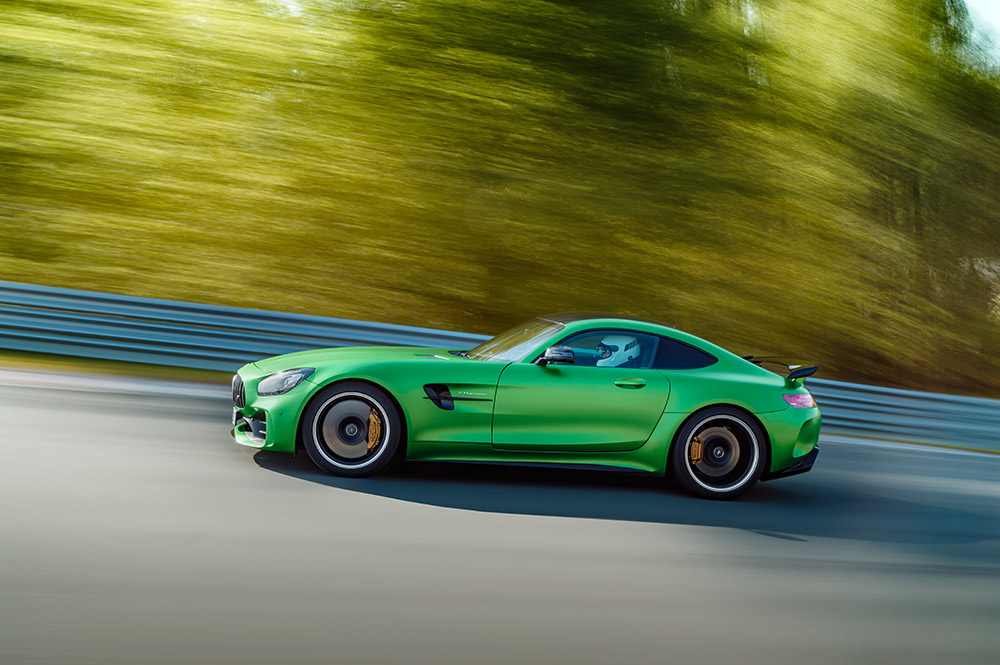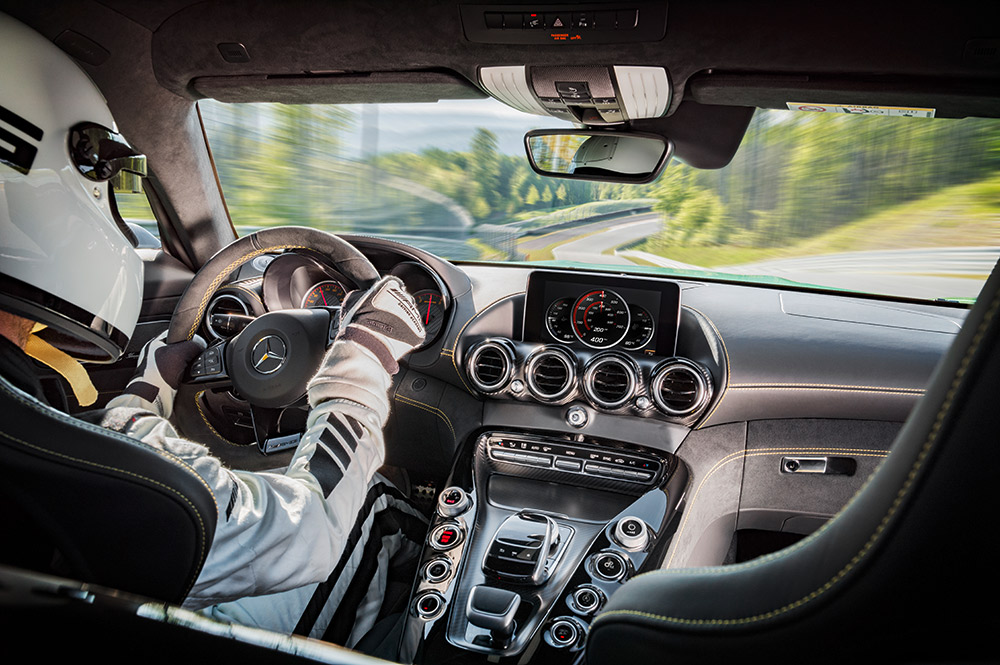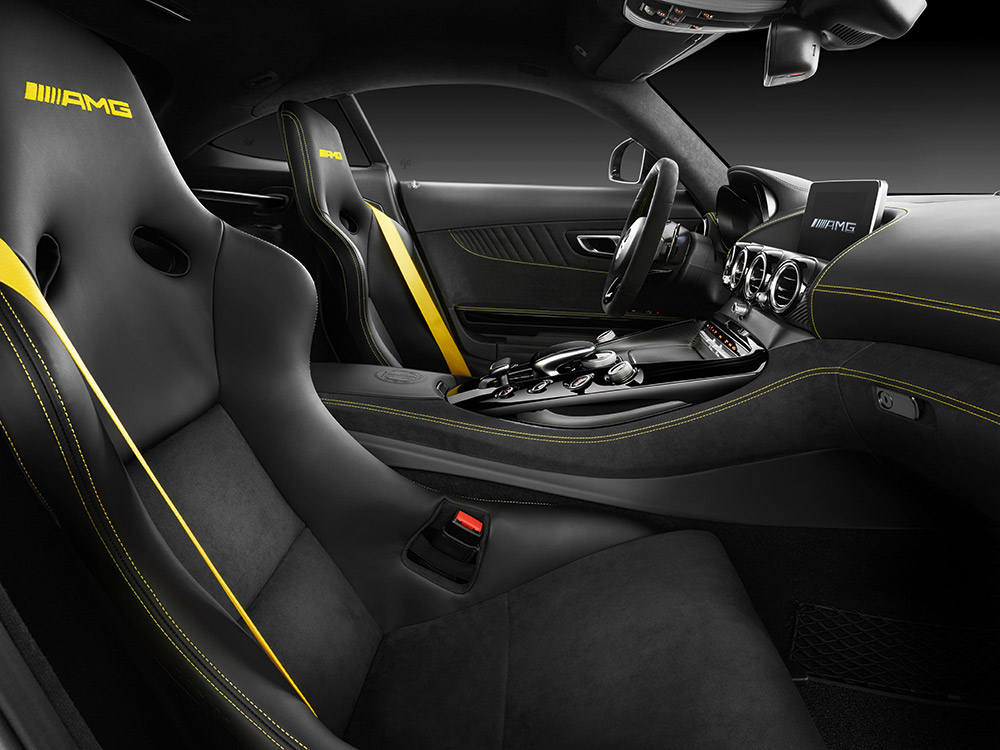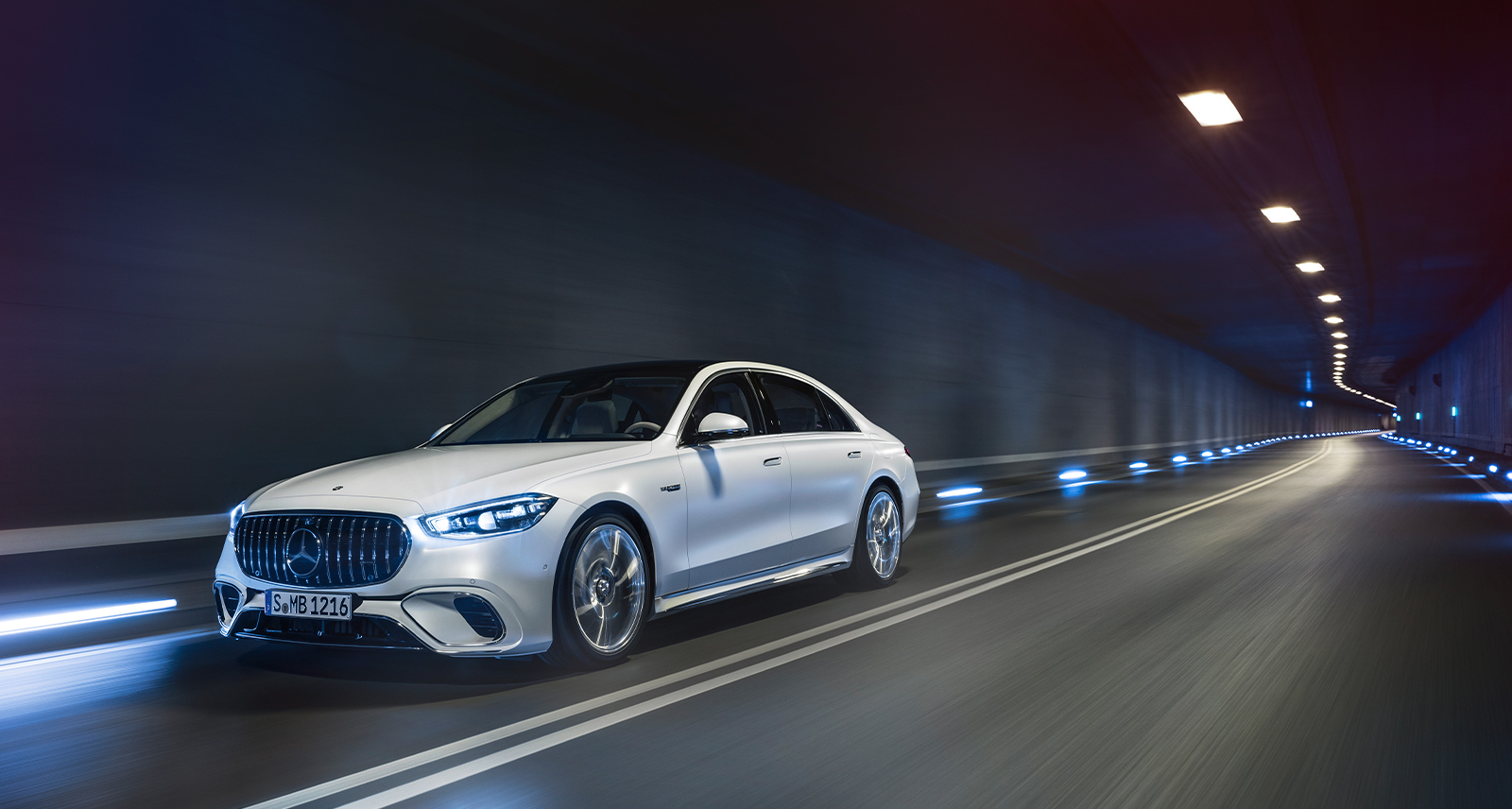Mercedes-Benz’s Muscle Car: Driving the Hardcore AMG GT R
The German brand is known for its extremely posh cars that are as refined as any Rolex. They tend to ooze an over-the-top quality, giving off a whiff of decadence. For proof, see the all-new flagship S-Class. The Mercedes-AMG GT R then, is a very different sort of Merceds. It’s a diamond in the rough, a rowdy old-school sports car with a visceral muscle-car soundtrack. The AMG GT was introduced back in 2014, originally serving as a kind of successor to the gullwing SLS. Like it, the GT was also developed entirely in-house at AMG, rather than as an AMG derivative of a mainstream Mercedes model.
Walking up to the GT today, it still looks fresh, which speaks to the fact that they’re a rare sight on the road. It’s impossibly long and low-slung, like some exotic concept car that has escaped from the Geneva motor show. It hugs the ground like a racecar.

Perhaps unsurprisingly then, the GT has had quite a successful racing career. The GT has faced down the best sports cars in the world on the racing circuit, and has often come out victorious. Little known fact: if you happen to be watching trackside at the legendary 24 Hours of Nurburgring race in Germany, sipping a cold can of hefeweizen, you can feel when the mighty AMG is about to roar past because the AMG is the only racecar with such a deep, sub-bass rumble that it shakes the can of beer in your hand.
It was that racing pedigree that the brand wanted to tap-into with the new “R” version of the AMG GT. Consider it something to rival Porsche’s increasingly popular track-day toys, like the 911 GT3 and 718 GT4. The Mercedes however, with its vicious twin-turbo V8 engine and front-mid engine layout, is more like a muscle car that went to boarding school.

You don’t climb into it so much as drop down into the driver’s seat. There’s a prominent yellow knob in the centre of the dashboard that can be used to dial-in the precise amount of traction control. Out the front window the long hood stretches toward the horizon. Despite the modern materials, it’s an old-school view.
Price? $190,400. Our test car with a few options topped the $200,000 mark.
The engine is a highly-strung version of AMG’s 4.0-litre twin-turbo V8 with 577 horsepower and 516 lb-ft of torque from just 1,900 rpm. As per AMG tradition, each motor is hand built; a plaque on the engine carries the signature of the builder.

You’ll notice the carbon-fibre wing and splitter, and maybe that the overall front track is wider too, to fit bigger wheels and tires. What you won’t see is the clever active aerodynamic flap underneath the car. In RACE mode, it creates a Venturi effect, sucking the car to the road for added high-speed stability. Driven on a circuit, this thing can pull lateral Gs that’ll make your neck sore – trust us, we tried.
The suspension is exotic racecar stuff: coil over dampers with manual pre-load adjustment, new forged aluminum components and precision spherical bearings. The rims are lightweight forged items. Extra weight is saved by the snarling titanium exhaust. All told, the car is 15 kilograms lighter than the GT S.
All of these details paid off. When it debuted, the GT R became the fastest road-going sports car around the Nurburgring Nordschleife, setting a time of 7:10.9. The even racier GT R “Pro” set a time of 7:04.6, as you can see here:










